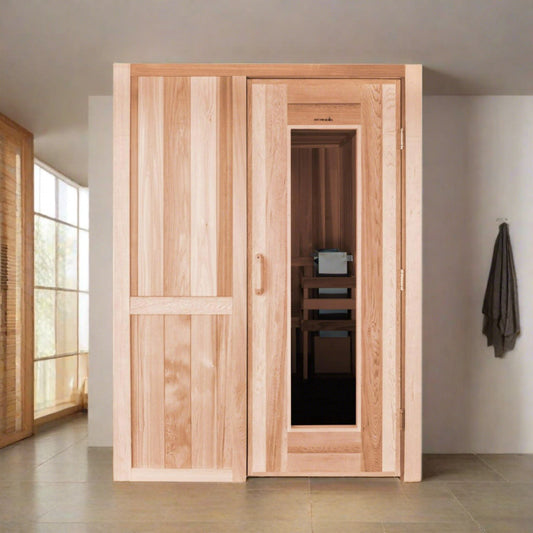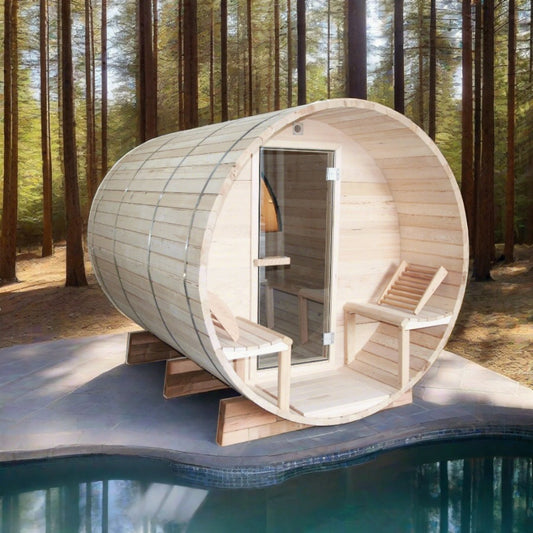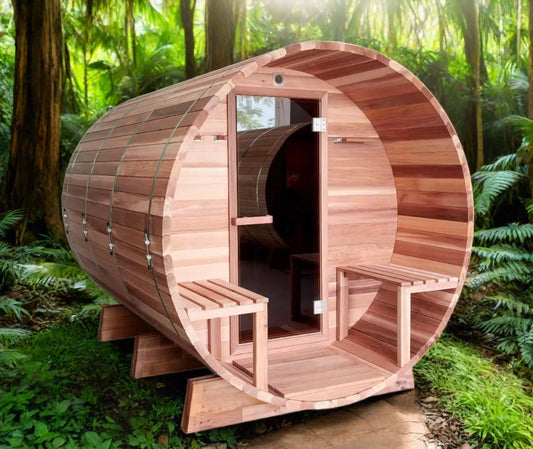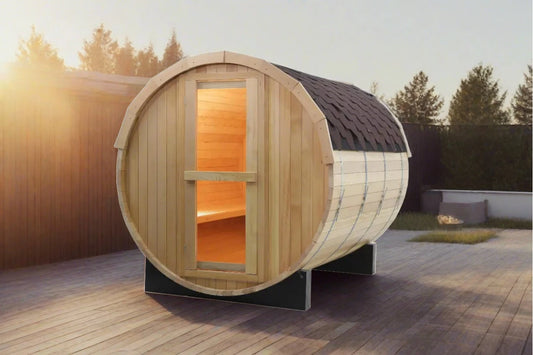In traditional Finnish baths, people would sit on wooden benches at varying heights and start sweating profusely to remove impurities from their bodies.
So who invented saunas?
It's most associated with the Finnish culture. While it's unknown exactly when saunas were invented, Finnish saunas started as a combination of the Roman bath (that uses hot, dry air) and the Russian banya (that uses steam).
The Finnish sauna was a smoke sauna where stones were heated with an ire for several hours, and bathers would go into the enclosure once much of the smoke had cleared.
It was always a part of Finnish culture. There were rituals surrounding baths, such as having a cup of tea or a meal before a day of work.
Besides the Finnish culture, some cultures also embraced the heated bath. In Russian saunas, people use a small bundle of plants to massage their skin lightly.

Ancient Saunas
Finland has plenty of saunas to share.
The tradition of saunas dates back to Northern Europe in countries including Estonia, Latvia, Russia, and Finland. It's believed that the first saunas were built around 2,000 BC.
In these countries, the debate about who has the best saunas often comes down to who has the most traditions and building techniques.
Most people don't know that the history of saunas goes back to the time when they were first built underground.
The first saunas were made of caves that had been covered in animal skins. These rooms were heated by a fire that was burning inside them. The smoke would then scatter the stones as it burned, creating a magnificent greenish glow that would warm the cave.
They were also sterilized by the smoke, which helped keep the body warm. These rooms served as the essential part of a landscape, sustaining life in harsh winters, giving birth and helping people prepare for the end of their lives.
As a result, the saunas became holy places that were connected to spiritual beliefs. Some of these included the belief that the spirits of the saunas were feared and respected.
From ancient Egypt to Scandinavia, archaeologists have unearthed traces of saunas that date back thousands of years. They have also discovered sweat lodges that were used by native American tribes.
There's also evidence that the mysterious circles made from stone and wood were used for rituals.
These circles become more extensive as you travel farther north. They are most likely found in Scotland.
Early sauna culture survived in northern Europe, but it was wiped out in other regions.
In the US, Native Americans have traditionally used sweat lodges for their spiritual ceremonies. It's believed that the practice gained steam during the 1800s and early 1900's due to European immigration.

Modern Saunas
The introduction of electric saunas in Finland during the mid-20th century changed the way people experience them. This method of heat provided a more accessible and enjoyable experience for many.
In 1976, National Geographic revealed how the workers at the Cinnabar mine in Spain used a sweat bath to reduce their mercury exposure.
Unlike traditional saunas, infrared saunas use infrared technology to provide heat. This type of bath is different from a conventional sauna because it uses an infrared emitter that produces intense heat. The difference is that these machines use less electricity and are equipped with higher-efficiency infrared heat sources.
For 15 years, NASA has been using infrared sauna technology to help astronauts maintain their ideal body composition. According to the agency, a 20-minute session in the sauna burns as many calories as taking a 6-mile run.
However, remember, no matter where you are in the world and which sauna you are using, remember that you are continuing an ancient tradition with an extraordinary story the next time you sweat it out inside.
Saunas never have just been rooms. They are a way of life, and so, in many ways, the history sauna is a history of us.





